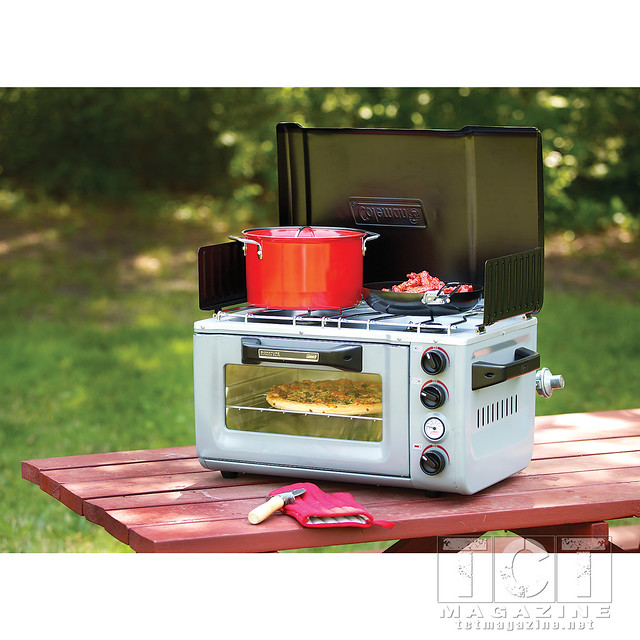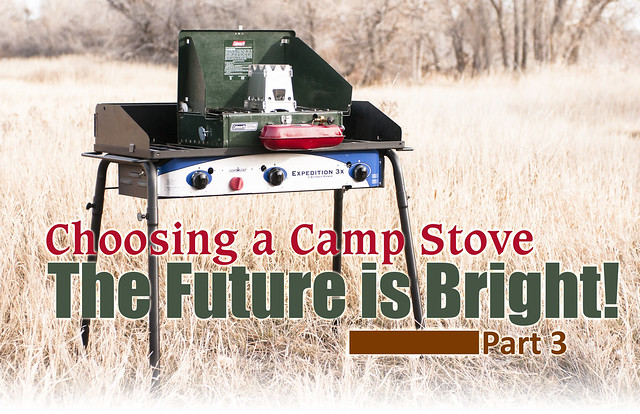
We are in the dawn of some pretty remarkable times in the outdoor cooking market. There has been a revolution in camping cooking and a growing number of people want to cook, I mean really cook. We are no longer satisfied with the statuesque of hotdogs and canned beans. The numbers of cooking classes at events like Overland Expo attest to this rise in backcountry culinary dining. Stove manufacturers are catching up with market demand and listening to what customers are saying and watching how they are cooking in the field.
Camping stoves are becoming more than just burners. We are no longer satisfied with being relegated to cooking our meals in pots and pans; we want grilled asparagus and steak with our risotto. Camping stove manufacturers took note and are now designing stoves with integrated barbecue grills. One burner provides heat for a large grill cooking surface. Integrated drip trays catch grease and help to distribute heat across the grill. The second burner provides heat to a cooking grate for those meals needing to be prepared in traditional cookware. The best thing about these stoves is you are not limited to just using the grill for barbecuing. Although the grills provide heat over a larger area, they can still be used to heat cookware and some stoves even come with non-stick griddles that can easily be swapped in to expand the cooking capabilities.

There is nothing quite like eating fresh-baked bread, especially while in camp, and there is a growing market for camping stoves with integrated ovens. Built like mini ranges found in home kitchens, these stove/oven combos feature two standard burners, for preparing meals in traditional cookware, and ovens capable of reaching up to 400° F (Camp Chef) and cooking up to a 12in pizza (Coleman). The menu possibilities these stoves bring to the table (pun intended) are endless. The stove/oven combinations allow for meals like clam chowder served in freshly-made bread bowls or chicken cordon bleu with long-grain rice and pine nut pilaf to be served for dinner and peach cobbler to be served for desert. Okay, now I am really getting hungry!
Camp cooking innovation does not stop with barbecue grills and ovens. Advancements in thermo-electric power generation have changed how we can look at camping stoves. Once was seen as unsophisticated and rudimentary, wood burning stoves are now being fitted with electricity generators, combustion fans, and USB power ports. A portion of the heat produced in the combustion process is converted into electricity. That electricity is used to power a combustion fan that is used to make the combustion more efficient. Excess electricity is used to charge our portable electronic devices as we cook dinner.
Related Articles

Technology isn’t only affecting the ability for stoves to charge our portable electronic devices. Advancements in materials and manufacturing techniques have allowed manufacturers to produce lighter and stronger stoves for less money. Carbon steel was once the material of choice for camping stove construction. Today we are seeing stoves made from stainless steel and aluminum with many components being constructed from composite materials. Companies are also looking at other areas to integrate technology.
So you can see why I am excited about what the industry is working on. All of these design and technological advancements means companies are investing money in design and further innovation. Startup companies are popping up, beginning to develop and produce stoves for the market. We saw this same advancement in backpacking stoves over the previous decade. As more products enter the market, there is increased pressure on the manufacturers to be innovative. This is a great time to be buying or upgrading your camping stove, the only problem is how much more impressive will next year’s stove designs be and can I wait until then to find out.
All Photos!
[flickr set=72157646583115781]
To get your copy of the July 2014 issue of TCT Magazine:
FIND US ON:









